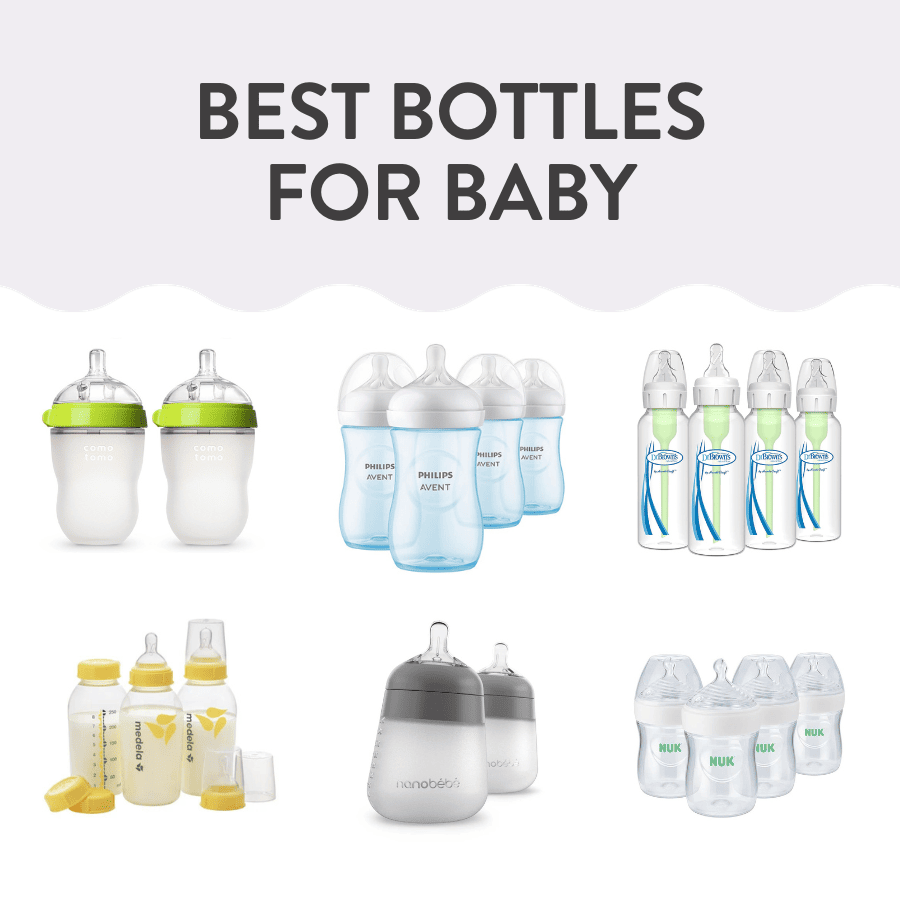A baby bottle is essential for both formula feeding and breast milk feeding. In this buying guide for the best baby bottles, we review how to pick the best bottle for your baby, tips for cleaning and sterilizing bottles, and how to eventually wean your baby off the bottle. For newborns – 12 months.
Medically reviewed and cowritten by Lauren Braaten, Pediatric Occupational Therapist (OT).
Baby bottles are an essential baby item, whether you’re using a combination of breastfeeding and bottle feeding or simply wanting another family member besides mom to be able to feed baby. Choosing the right bottle is an important decision, especially if you’re battling colic or want to use it in tandem with a natural feeding experience.
Fortunately, there’s a bottle out there for every baby’s unique needs and preferences. I developed this comprehensive guide on the best baby bottles based on my experience with the bottles I tried when my son’s breastfeeding journey didn’t go as planned. I’ll share my absolute favorite baby bottles as well as top-rated options, including key features and details you need to know.
Here are my top picks for the 6 best baby bottles you can buy.
How to Pick the Best Baby Bottle
Inevitably, it’s baby who will decide which baby bottle is best. But since your baby can’t exactly tell you what they like about a bottle, it’s up to you to decide which bottle to try first. Here are a few tips to help you narrow down your choices.
Baby’s Age and Developmental Stage: Newborns and infants have different feeding needs compared to older babies. Consider bottles designed for specific age groups or ones that are intended to grow with babies.
Material: You might be tempted to buy glass baby bottles because they won’t leach, are naturally non-toxic, and easy to sterilize. However, they are hard to grip, heavy to carry around, and they could break. Silicone is a great option because it’s soft, lightweight, durable, and won’t break. All of the models on this list are made up of BPA-free plastic.
Size and Capacity: Bottles come in various capacities, so choose one that matches your baby’s feeding needs and what they can hold. Newborns drink less but need to be fed more often. Every baby is different, so you might consider starting with a 4- or 5-ounce bottle and working up to the larger capacity baby bottles as your baby grows.
Here are my top picks for the 6 best baby bottles you can buy right now!
Reviews of The Best Baby Bottles
1. My Favorite: Comotomo Baby Bottle
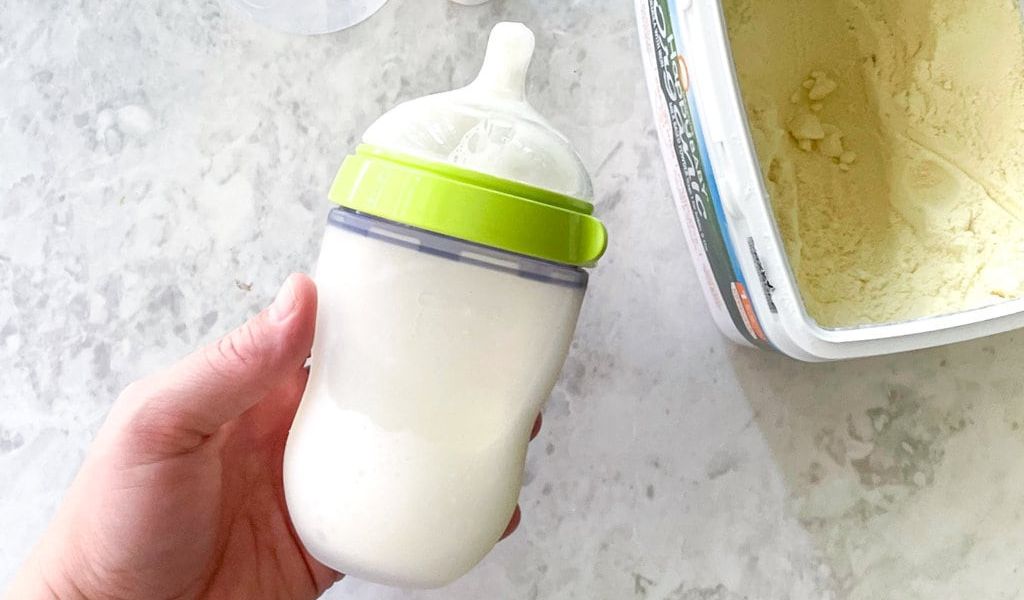
My personal favorite is the Comotomo Baby Bottle because its squishy silicone has a breast-like feel that mimics natural breastfeeding, so it’s easier to go back and forth between this bottle and the breast. In my experience, the wide-neck design makes it much easier to avoid spills and messes when transferring breast milk to the bottle or mixing formula in it. Plus, it’s large enough to fit a dish brush in it for a quick wash by hand.
A unique interlocking feature and a no-drip design make these bottles practically leak-proof so I was able to pack them in a diaper bag without worrying about spills. I also love that they are safe to put in the dishwasher, sterilizer, and microwave, making them easy to clean and use.
The Specs:
- Material: Silicone
- Sizes: 5 and 8 oz
The Pros:
- Soft, silicone nipples
- Easy to clean
- Microwave, dishwasher and sterilizer safe
- Non-leaking, anti-colic vents
The Cons:
What Others are Saying:
Both Reviewed and Good Housekeeping named the Comotomo Baby Bottle the best silicone baby bottles. They also have a 4.7-star rating on Amazon with more than 43,000 reviews.
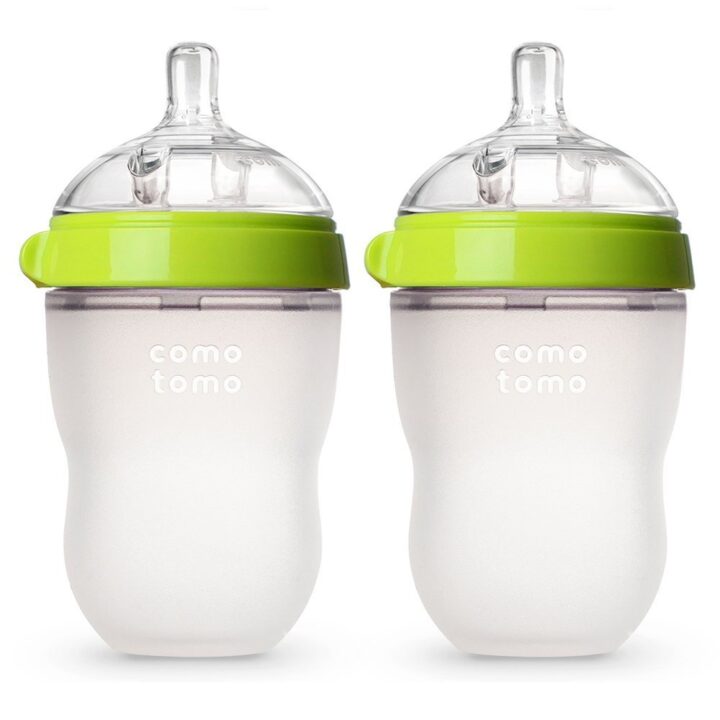
2. Best Anti-Colic Baby Bottle: Dr. Brown’s Options+ Baby Bottles
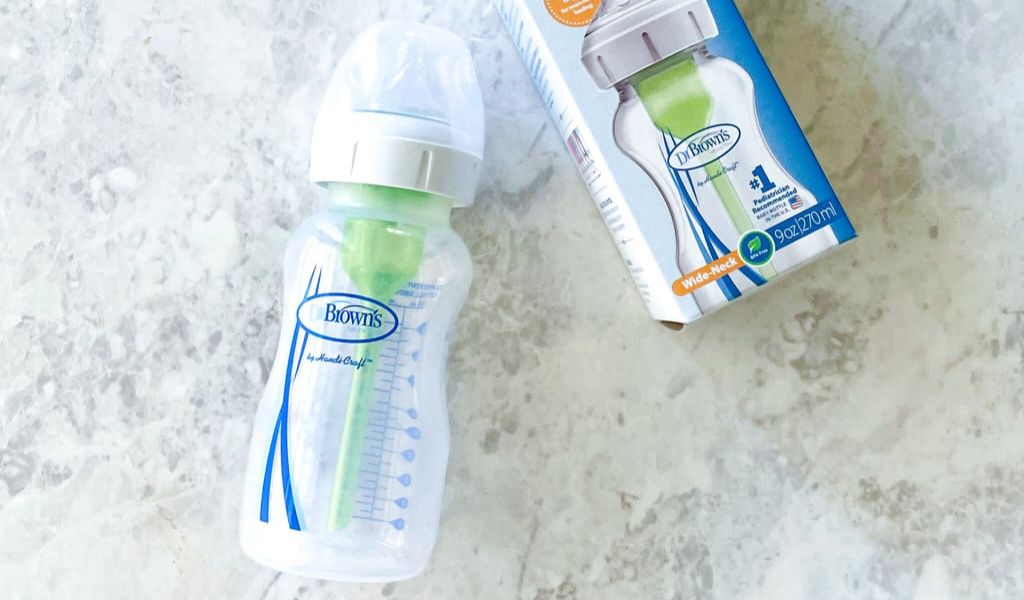
I found that Dr. Brown’s bottles were a wonderful bottle for feeding my son. We had very minimal issues with spit-up, burping, and gas thanks to the bottle’s anti-colic internal vent system that helps prevent the ingestion of air bubbles and eliminates the vacuum effect. Because he was less of a gassy baby, he was a happier baby!
You can also remove the vent system, which I found helpful as my son got older so he could control the flow on his own and feed at his own pace. The bottle did leak occasionally, but I found this was easily fixed by making sure the bottle was not overfilled and that the bottle cap was twisted on nice and tight.
The Specs:
- Material: BPA-free plastic or glass
- Sizes: 2, 4, 5, 8 and 9 oz
The Pros:
- Anti-colic vent is removable
- Prevents gas and reflux
- Fits most breast pumps
The Cons:
What Others are Saying:
Good Housekeeping named the Dr. Brown’s Options+ Baby Bottle best overall option. It also has a 4.8-star rating on Amazon with more than 30,000 reviews.
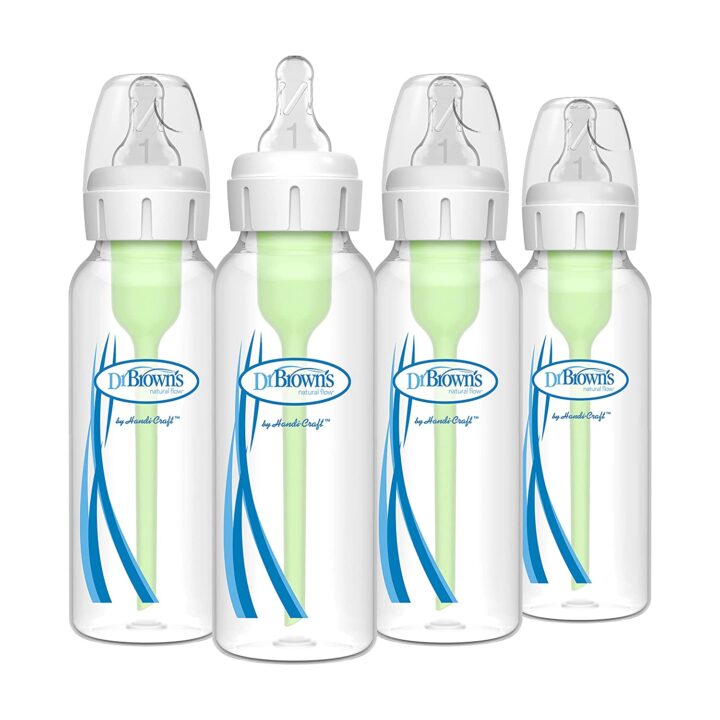
3. Best Silicone Baby Bottle: Nanobébé Flexy Silicone Baby Bottle
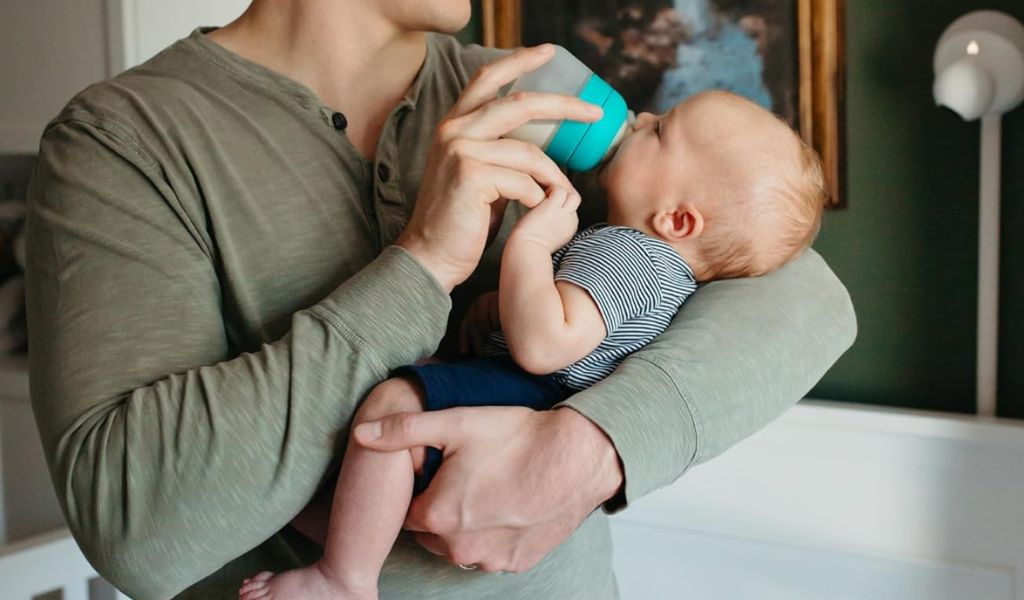
I think the best feature of the Nanobébé Flexy Silicone Baby Bottle is its design. It has a flexible, squeezable body that allows you to gently press the sides of the bottle to control the flow of milk, which is handy if you want to mimic breastfeeding as closely as possible. This can make it easier for babies to transition between breastfeeding and bottle-feeding. There’s also an integrated venting system and anti-colic nipple to keep spit-up, gas, and colic to a minimum.
The non-tip base prevents spills and the easy-to-read volume dashes make it easy to get feeding ready if you’re overwhelmed. We also like that the BPA-free silicone is durable, non-toxic, and dishwasher- and microwave-safe, so they’ll last longer than your baby will need them.
The Specs:
- Material: BPA-free plastic
- Sizes: 2, 4, 5, 8 and 9 oz
The Pros:
- Natural breast feel
- Non-collapsible nipple
- Prevents gas and reflux
- Stable base prevents tipping
The Cons:
- Vent can be hard to clean
What Others are Saying:
Parents named the Nanobébé Flexy Silicone Baby Bottle the best silicone baby bottle. It has a 4.8-star rating on Amazon with more than 30,000 reviews.
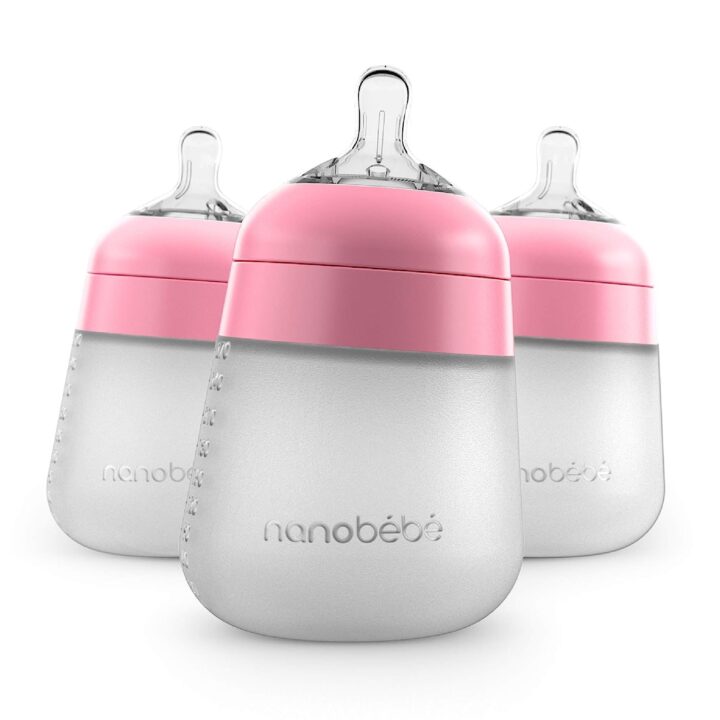
4. Best with Temperature Indicator: NUK Simply Natural with SafeTemp
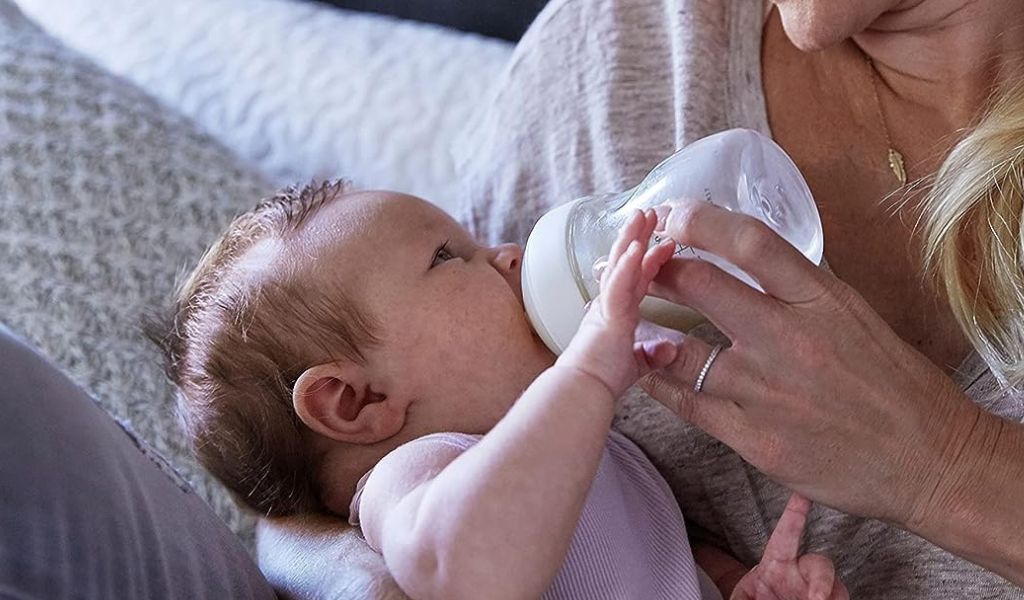
A major concern when bottle feeding is that the milk will get too hot, too quickly if you choose to warm it. I like that these NUK bottles have a built-in heat indicator that disappears when the milk is too hot for a baby to drink, and then it reappears as the milk cools down and is safe to drink.
This newer model has an ergonomic design that allows space for a baby’s tongue and jaw to move more naturally, just like they do when breastfeeding, according to the brand. That coupled with a vented nipple with multiple holes with your choice of slow, medium, or fast flow gives it a natural feel that encourages proper latching. The brand also promises that it cuts down on gas and reflux for one happy baby during feeding time.
The Specs:
- Material: Plastic
- Sizes: 5 and 9 oz
The Pros:
- Natural feel
- Built-in heat indicator
- Prevents gas and reflux
- Multiple nipple options
The Cons:
- Only available in plastic
What Others are Saying:
Good Housekeeping named it the best bottle with a temperature indicator. It has a 4.7-star rating on Amazon with more than 2,700 reviews.
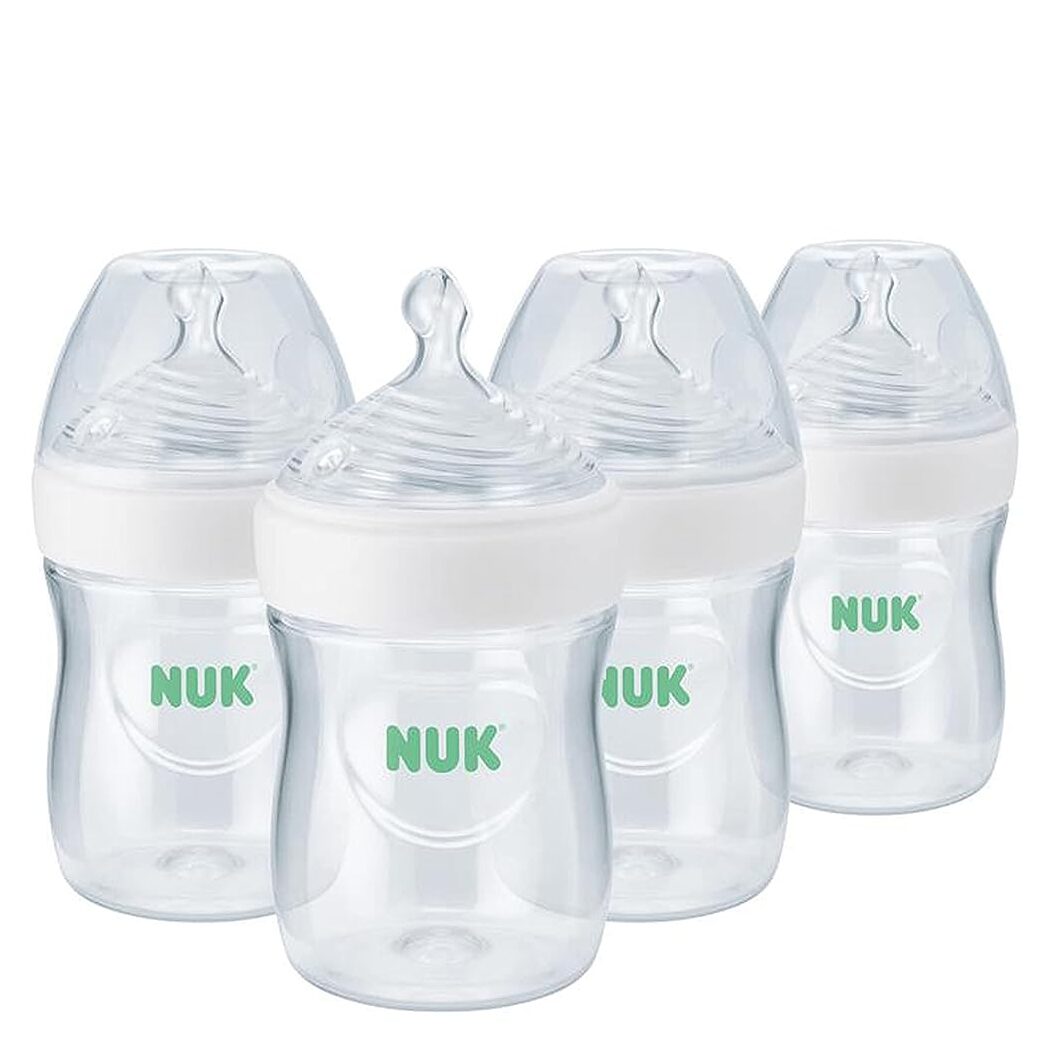
5. Best for Nursing: Philips Avent Natural Baby Bottle
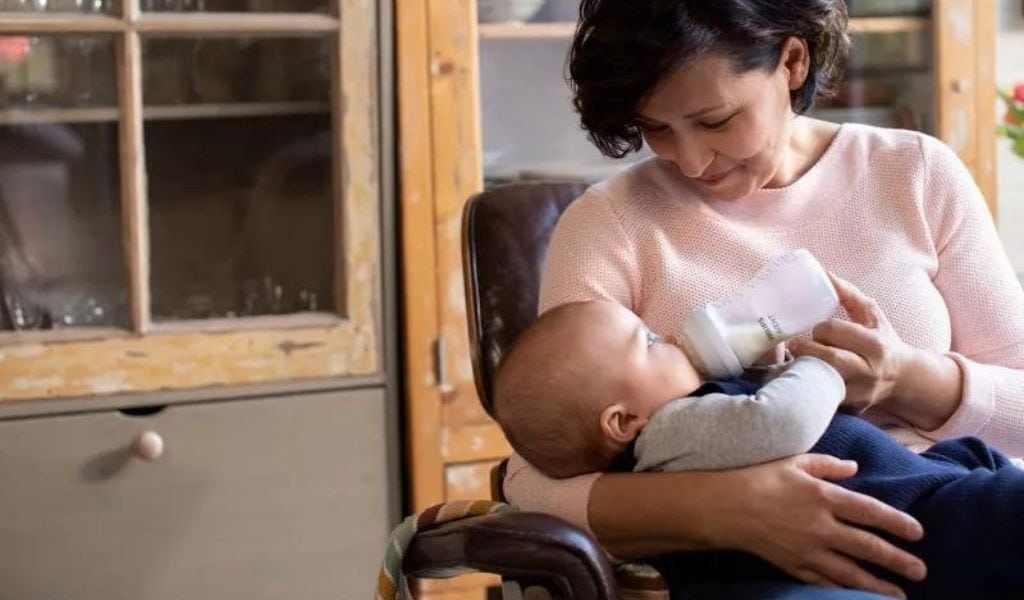
The Philips Avent Natural Baby Bottle is a popular option because it has a wide, breast-shaped nipple that eases the transition and helps reduce nipple confusion. It has a newly designed responsive nipple tip that only releases milk when your baby sucks and pauses the flow of milk when they stop to breathe or swallow. Because the bottle has a controlled flow, your baby won’t be overwhelmed or drink too fast. You can also size up on nipples as your baby grows.
The Specs:
- Material: Plastic
- Sizes: 4, 9, and 11 oz
The Pros:
- Responsive nipple
- Controllable flow
- Anti-colic valve
- Range of flow rates
The Cons:
- Difficult for baby to hold themself
What Others are Saying:
Wirecutter gave the Philips Avent Natural Baby Bottle its runner-up pick in their roundup and Good Housekeeping named it the best bottle for breastfed babies. It has a 4.7-star rating on Amazon with more than 13,000 reviews.
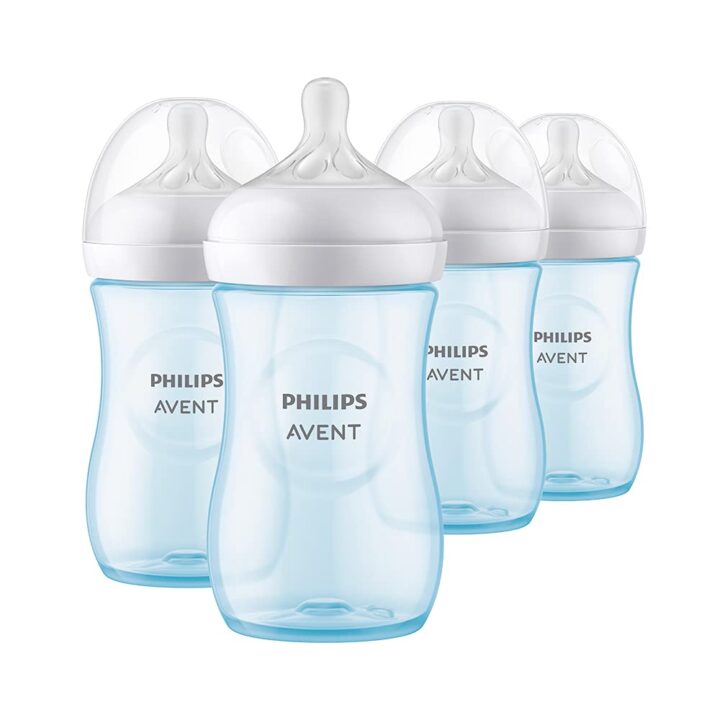
6. Best for Pumping: Medela Breast Milk Storage Bottles
If you plan to pump exclusively, you’ll need to pick up these Medela Milk Storage Bottles that attach directly to the brand’s breast pump. It reduces the number of steps it takes to make a bottle, waste, and the amount of dishes you have to do! The design is simple with easy-to-read measurement markings and they are microwave and dishwasher safe, so it’s great for busy moms. You can also use these bottles without the breast pump and I like that there’s wide based medium-flow nipples for easy delivery.
The Specs:
- Material: Plastic
- Sizes: 5 and 8 oz
The Pros:
- Pump, store and feed with one container
- Easy to assemble
- Precise measurements
- Reduces waste
The Cons:
What Others are Saying:
This product has a 4.8-star rating on Amazon with more than 8,900 reviews and Insider named it best for pumping.
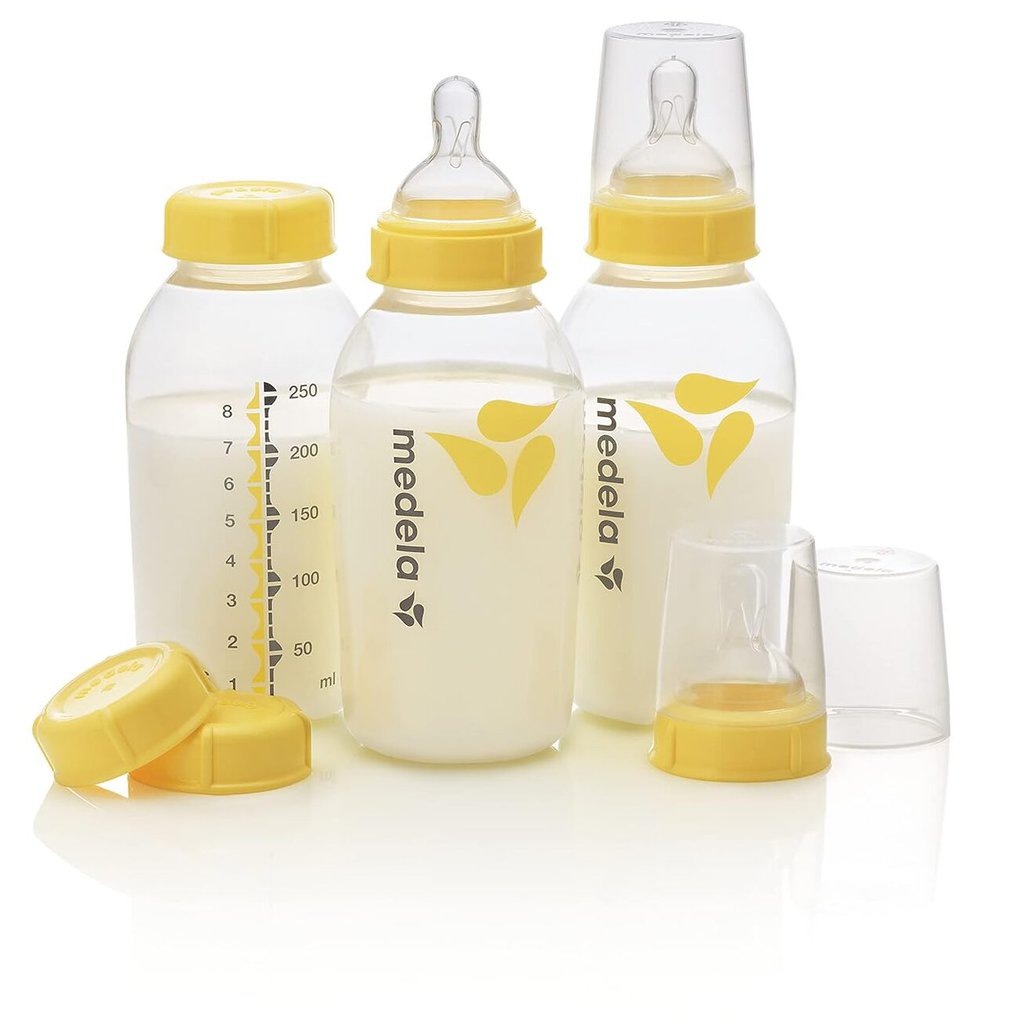
Other Baby Bottles to Consider
Ember Baby Bottle Self-Warming Smart System Plus
If your budget allows, this smart system is innovation at its best. This self-warming bottle circulates the milk or formula to heat it up to body temperature and it can be controlled by the app. When you’re on the go, its lightweight thermal materials keep milk cool for up to 4 hours. When you’re ready to heat it up, just push a button to warm up your milk anywhere. It’s a fantastic gadget for those who love to be tech-savvy, although it does come with a higher price. The Ember Baby Bottle Self-Warming Smart System Plus is available at Amazon for $399.99.
Evenflo Feeding Glass Premium Proflo Vented Plus Bottles
For eco-conscious parents, these bottles are made from tempered glass, which is durable and free from harmful chemicals. They have a uniquely twisted design that makes them easy to hold but this shape also makes them harder to clean. The Evenflo Feeding Glass Premium Proflo Vented Plus Bottles are available at Amazon for $18.99.
Lansinoh Baby Bottle
Simple and effective, the Lansinoh Momma Breastmilk Feeding Bottle is perfect for moms of newborns who want a fuss-free feeding experience. The vented nipples are designed to mimic nursing with controllable flow and cut down on gas and reflux similar to the Philips Avent Natural Baby Bottle. The Lansinoh Baby Bottle is available at Amazon for $17.99.
Why You Can Trust Us
I’m Michele Olivier, the creator of Baby FoodE, where I post adventurous recipes ranging from babies’ first purees to equally memorable (but perhaps less enjoyable) sit-down family dinners with feisty toddlers. I began my baby blog shortly after I had my first baby girl, Elliette. I quickly realized how difficult it was to narrow down all of the choices for things like the best baby bottles out there, so I decided to share my favorites with you in this guide.
For baby bottles that I haven’t personally used, I diligently researched popular options from top parenting publications and read reviews to see how easy these baby bottles were to clean and hold and what worked for other moms. These products were also medically reviewed by Lauren Braaten, a Pediatric Occupational Therapist (OT).
Tips for Using Baby Bottles
- Sit baby in a more upright position in your arms, versus lying down. This reduces the pressure of milk flow into the baby’s mouth and encourages your baby to actively suck.
- Hold the bottle horizontally and keep the nipple only about halfway full. Allow baby to take 5-10 sucks and then gently pull the nipple back slightly so it’s touching baby’s bottom lip. This will allow your baby to pull the nipple back into their mouth when they are ready to suck again.
- Take breaks during the feed to burp your baby or gently rub their back to help pace the feeding.
- Alternate which side you feed your baby on to mimic breastfeeding more closely.
- Don’t forget to change the bottle’s nipple sizes when needed, for smoother feedings. Although the nipple levels are recommended for certain age ranges (for example, 3 months+), every baby will develop at their own pace, which is not necessarily a reflection of their age or size. Signs that it may be time to move up a level include taking longer to finish eating, becoming fussy or irritated while eating, or falling asleep during feeding.
Frequently Asked Questions
While each baby develops differently, it’s typical for a baby to begin to develop the motor skills required to hold their own bottle and feed themselves around 6 months. By 8 months they may be able to grasp a baby bottle with both hands and a little assistance. By 9 or 10 months, babies can usually manage the bottle’s weight on their own.
Cleaning a baby bottle is a crucial part of maintaining your baby’s health and safety. If you can, clean bottles immediately after use to prevent milk or formula residues from drying and becoming harder to remove. Here are the steps on how to properly clean a baby bottle:
Disassemble: To clean out all the nooks and crannies, start by completely disassembling the bottle and all its parts.
Rinse: It’s best to rinse them out right away by holding the bottle under running tap water to wash away any residue.
Soak (if needed): If you waited too long and have a caked-on mess you can soak them in hot water with a few drops of dishwashing liquid.
Wash: Fill a basin or your sink with hot water and add a few drops of baby bottle-safe dishwashing liquid. Submerge all the bottle parts in the soapy water.
Scrub: Use a bottle brush to scrub the inside of the bottle thoroughly paying close attention to the bottom and sides,
Air dry: Place the bottle parts on a clean, lint-free towel or paper towel to air dry. Avoid using a cloth towel that might leave lint on the bottles. Don’t reassemble the bottle until all the parts are completely dry.
Sterilizing baby bottles is a recommended practice, especially for newborns and in the early months of a baby’s life. While it’s not an absolute necessity for every bottle feeding, sterilization can help ensure that bottles are free from harmful bacteria.
The easiest way to sterilize baby bottles is by placing them on the top rack of the dishwasher. You can purchase a steam sterilizer or place them in boiling water on the stove for 5 minutes. Of course, always refer to the manufacturer’s instructions.
Additionally, you should always wash your hands thoroughly before handling baby bottles and allow all the parts to dry completely on a clean, lint-free surface to prevent contamination.
The number of baby bottles you’ll need can vary depending on a few factors, including your baby’s age, feeding preferences, and how often you plan to wash and sanitize bottles. Some parents prefer to have extra bottles for convenience, while others are comfortable with fewer and wash them more frequently.
If you plan to exclusively breastfeed and use bottles only occasionally, you can start with a smaller number of bottles (3 to 4) and wash them between uses. If you’re doing a combination of breastfeeding and bottle-feeding, I recommend starting with 8 to 10 different bottles.
Weaning a baby off bottles is a gradual process that should be approached with patience and sensitivity to your child’s needs and preferences. Most pediatricians recommend starting to wean by the age of 1 by transitioning to a sippy cup or straw cup. You can gradually introduce the sippy cup by replacing one snack or feeding per day with the cup, over the course of a few days to a week. Then progress to replacing 2 bottle feedings a day with the cup, and so on. Eventually, you’ll be able to eliminate nighttime bottles.
Remember to be patient and use positive reinforcement to help your baby feel more confident about the change. Consistency is key, so map out a plan and stick to it to avoid going back to bottles once you’ve made progress.
The Best Baby Formula
If you choose not to breastfeed, choosing a good formula is essential. Navigating the world of baby formula research can be quite daunting, but I’ve made the effort to simplify it for you in my Guide to the Best Organic Baby Formula.
Inside, you’ll find valuable insights on selecting the right formula, what to steer clear of, a comparison of organic and conventional options, an exploration of the various types of organic formulas, and our top recommendations for trusted organic baby formula brands in both the United States and Europe.
Prices were accurate at time of publication.


